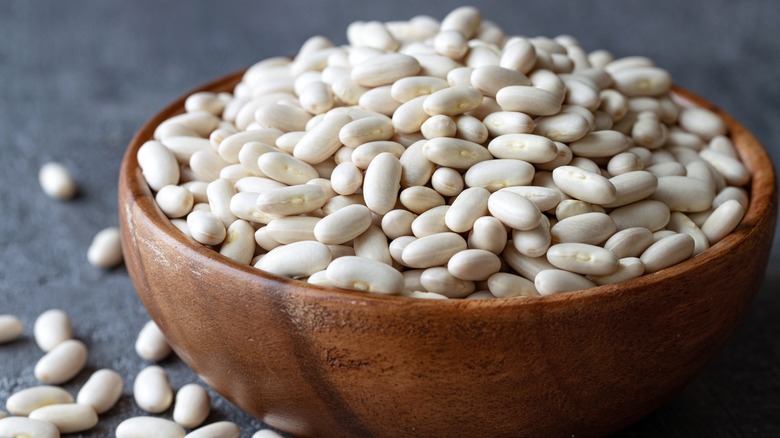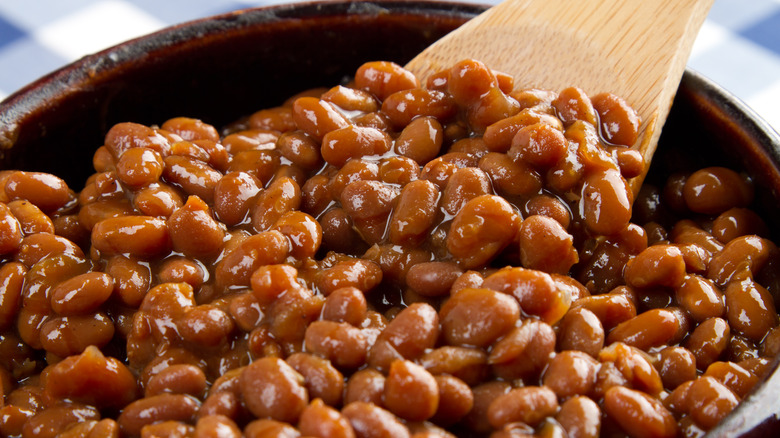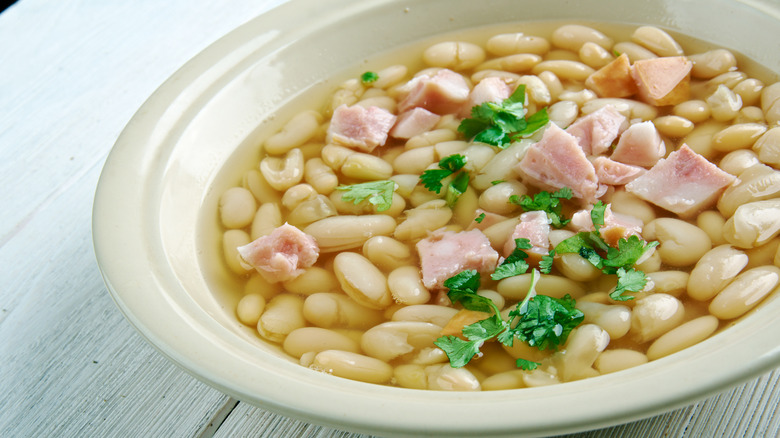Where Did Navy Beans Get Their Name?
Navy beans are more common than you might think. Chances are they're a staple on your regular shopping list and a permanent fixture in the pantry. But what are they exactly? Navy beans — also known as haricot beans, white pea beans, and Boston beans — are the variety commonly used in baked beans, served in a tomato-based sauce. They've been a part of humanity's diet for several thousand years, and the U.S. Navy rationed them to sailors during the 19th century because of their high nutritional content and long shelf life.
Farmers in Peru are believed to have been the first people to cultivate navy beans several millennia ago. Belonging to the Fabaceae plant family, these legumes are small, white, and oval-shaped; they possess a mild taste and are cooked easily, making them one of the most versatile ingredients for a variety of recipes. Nowadays, navy beans are commonly used in soups and stews from different cultures, as well as the famous Boston Baked Beans from the proclaimed Beantown of America.
Navy beans are cheap, low in fat, and high in protein, as well as easy to grow at home. Packed full of micronutrients and antioxidants, it's easy to see why they were so popular among the military forces of the 1800s, and why they're still so popular across the globe today.
The U.S. Navy rationed the beans to sailors
Belonging to the species Phaseolus vulgaris, the same family branch as chickpeas, the white, oval-shaped haricot beans became a staple of sailors' diets during the 19th century, saving many from starvation. Navy beans are packed full of nutrients: 182 grams contains 255 calories, 15 grams of protein, and 19.1 grams of fiber, as well as being rich in iron, B vitamins, and magnesium. As one of the healthiest legumes, the high fiber content of navy beans can help soothe symptoms of metabolic syndrome, according to Healthline.
Navy beans were nutritious sustenance for armies and available at low cost, too. This made them popular food fixtures for soldiers during the American Civil War, where economic differences between northern and southern forces made cost efficiency a priority. Navy beans were so popular among both armies that a traditional Civil War song known as "The Army Bean" was sung by soldiers, featuring lyrics such as "Beans for breakfast, beans for dinner, beans for supper. Beans! Beans!! Beans!!!"
Years later, during World War I, navy beans spiked in popularity among the military once more when they were rationed fastidiously by the U.S. Navy to sailors as more in keeping with a working war vessel than a floating high-brow restaurant the ships had become.
Washington D.C. has its own traditional navy bean soup recipe
Because they are easily cultivated, humans have grown and eaten beans for over 8,000 years, with the common beans native to America found in the diets of the Andes and Mesoamerican people. As such, navy beans can be found in countless traditional recipes from around the world, including bab leves — a bean soup from Hungary — and a Serbian soup known as pasulj.
In Washington D.C., Senate Bean Soup is a popular dish in most restaurants. Its origins are unclear; many stories place the recipe's beginnings around 1903, with accounts varying as to its creator. Some credit Idaho Senator Fred Dubois, while others claim Minnesota Senator Knute Nelson was responsible for the soup's invention. Other American regions have their own baked bean recipes, such as Louisiana and Hawaii, which use the common bean once served to the Navy.
In 1907, Boston began branding itself as America's 'Beantown' during a publicity event, thanks to the dish's popularity and mass production in the Triangle Trade. Postcards used catchy slogans honoring Boston's beans as a marketing strategy. The nickname still lingers today; unfortunately so for some Boston locals — "Beantown" was ranked the fifth most annoying American city name in a survey conducted by Bospar in 2020.


